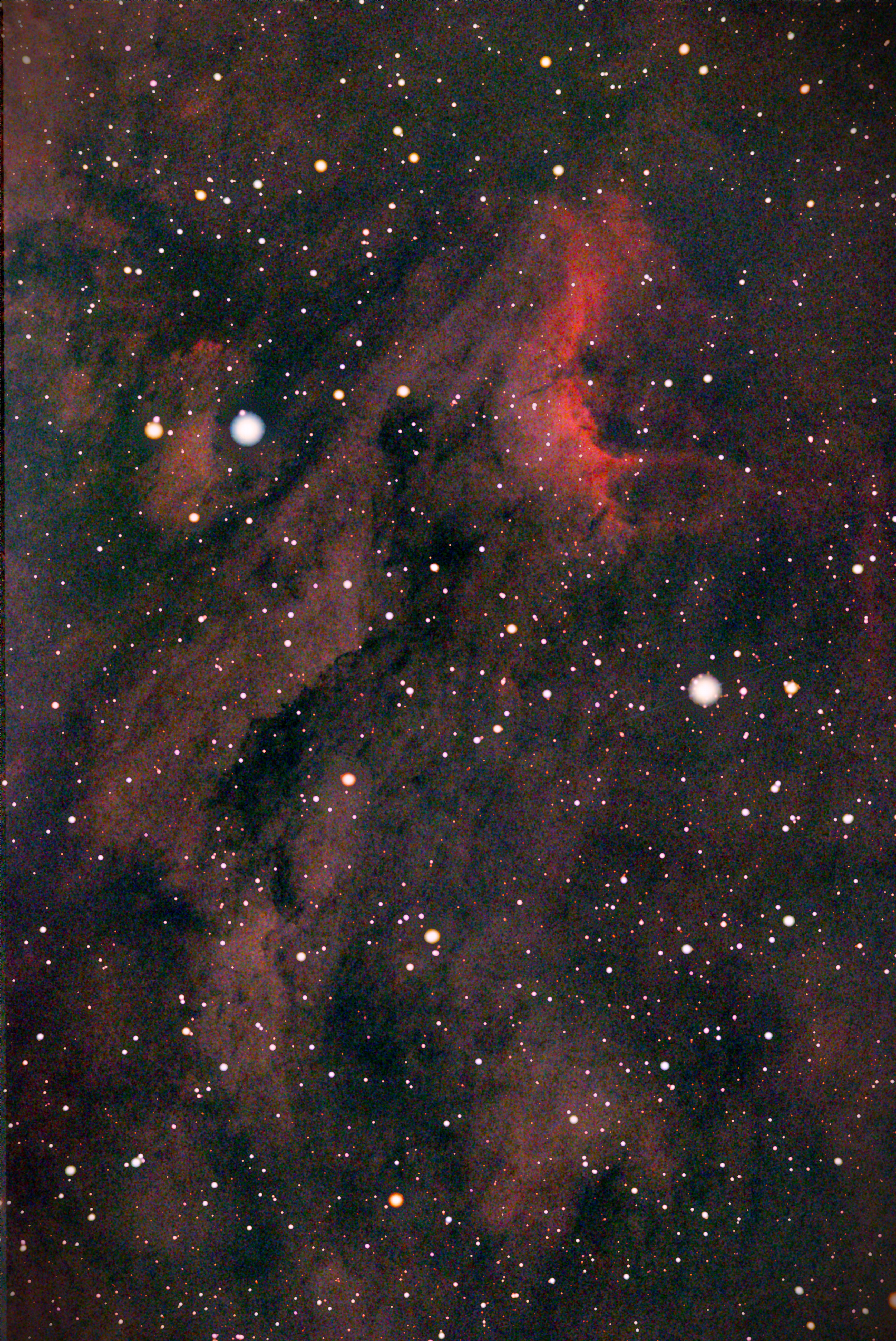

North American Nebula (NGC 7000) and Pelican Nebula (IC 5070)
The North American Nebula (NGC 7000) on the left, and the Pelican Nebula (IC 5070) to the right, are both found
in constellation Cygnus, about 2,500 light years away. They are near each other and share the same emission nebulosity
but form two distinctly different familiar shapes. The North American Nebula was discovered by William Herschel in 1786
from Slough, England. The superimposed red indicator is where the Gulf of Mexico would be. The name for IC 5070 should be obvious
since it is very identical in appearance to a Pelican. Its discovery is also credited to Herschel. In millions of years the stars
and gases will be so displaced it will no longer resemble a Pelican. The nebulae are categorized as an HII Region, which is
a region of ionized interstellar atomic hydrogen.
NGC 7000 covers at least 100 arcmin of the apparent celestial sky and requires several mosaic panels to complete a photographic image.
The Pelican Nebula is dimmer than NGC 7000 and the above image was taken over three hours.
{ Photo: R Lang & Associates }